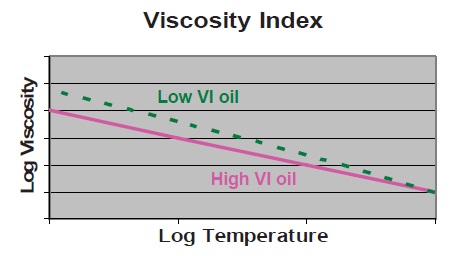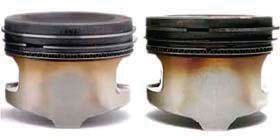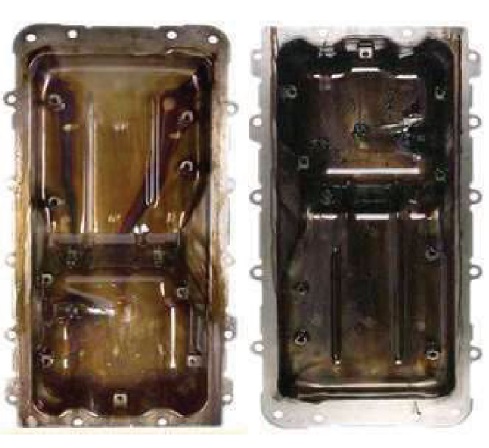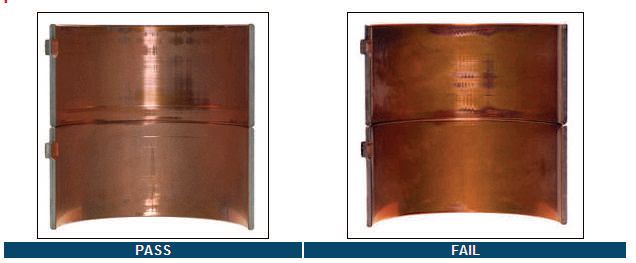Component performance in engine oil formulation
Dr. Don Smolenski | TLT Webinars October 2013
The winning formula is the right combination of base oil, additives and component test suite.
KEY CONCEPTS
•
Engine oil formulation is a delicate balancing act that is one part science and one part art.
•
Additives improve performance and protect the engine but can act synergistically or antagonistically when combined.
•
Understanding the appetite of each test for various components is critical.
WEBINARS: A SERIES FROM TLT
This article is the seventh in a year-long series based on Webinars originally presented by STLE University. “Component Performance in Formulating Engine Oils” was held Jan. 23 and is available at
www.stle.org: $39 to STLE members, $59 for all others.
Don Smolenski has a bachelor’s of science degree in chemistry from the University of Michigan- Dearborn and a doctorate in chemical engineering from Wayne State University. He is the OEM liaison manager-North America for Evonik Oil Additives in Grosse Pointe, Mich. He retired after 33 years with General Motors in Detroit. Don has experience in engine oils, including engine and field tests and development of the GM Engine Oil Life System, as well as in industrial lubricants, used oil management and recycling and chemicals management. You can reach Don at
donald.smolenski@evonik.com.
 Don Smolenski
Don Smolenski
THIS ARTICLE, BASED ON A WEBINAR PRESENTATION sponsored by STLE University, provides insight into how and why modern engine oils are formulated and the tests they must pass. We’ll also discuss the appetite for each of these tests for various components—some which improve and some which degrade test results.
The focus is on North American gasoline engine oils. While not exhaustive, this material shows the significant technology that goes into formulating engine oils.
BASE OILS
To formulate engine oil, the formulator starts with one or more base oils, which are categorized into API Group I to V. Moving from Group I to III is consistent with increasing severity of refining, a higher viscosity index (discussed shortly) and lower levels of sulfur. API Group IV oils are polyalphaolefins. Sometimes API Group V oils, defined as “other,” are used. These encompass esters, polyalkylene glycols, polymethacrylates, etc. Base oil is carefully chosen to achieve certain physical properties such as viscosity, viscosity index and volatility, as well as additive response.
Viscosity index is a measure of an oil’s variation in viscosity with temperature, as illustrated in Figure 1, a log/log plot of viscosity versus temperature. The higher the viscosity index of an oil, the less its
viscosity varies with temperature.
 Figure 1. Viscosity versus temperature for low and high VI oils.
Figure 1. Viscosity versus temperature for low and high VI oils.
If an OEM requires a minimum viscosity (usually hightemperature, high-shear viscosity) at a given temperature, and two oils are formulated to meet this requirement, the higher VI oil will have a lower viscosity over the temperature range, theoretically providing a fuel economy benefit.
ADDITIVES
After base oil selection, additives are chosen. Following are the most common additives in engine oils:
•
Detergents improve engine cleanliness. Since they contain an excess of basic material (i.e., are overbased), they are effective at neutralizing acids. Some commonly found detergents include (calcium, magnesium or sodium) sulfonates and phenates.
•
Dispersants keep insoluble contaminants and oxidation products suspended in the oil to prevent sludge formation. Common examples are various amines.
•
Viscosity Index Improvers (VII) are used to formulate multigrade viscosity oils such as SAE 0W-20. VIIs are relatively high molecular weight polymers that uncoil and increase high-temperature viscosity over that of the base oil alone. Most common are olefin copolymers and polyalkylmethacrylates (PAMAs).
•
Antiwear agents (AW) prevent wear in boundary lubrication conditions by reacting with metal surfaces to form a protective coating. The most common AW is zinc dialkyldithiophosphate (ZDDP).
•
Antioxidants inhibit oxidation of oils, which helps prevent oil thickening and varnish formation. Examples are hindered phenols, amines and ZDDP.
•
Friction modifiers (FM) provide a fuel economy benefit by reacting with the metal surface to form a slippery coating. Molybdenum compounds are common friction modifiers.
•
Antifoam additives reduce an oil’s tendency to foam by affecting its surface tension. Generally used in ppm levels, examples are silicones and methacrylates.
•
Metal deactivators protect metal surfaces by passivating them. ZDDP, in addition to being an antiwear and antioxidant, is also a metal deactivator.
•
Pour point depressants (PPD) reduce the low-temperature viscosity of oils by controlling wax crystal formation. Polyalkylmethacrylates (PAMAs) are most commonly selected for this functionality.
•
Seal swell agents prevent hardening of engine seals. Esters are commonly used.
•
Finally,
rust and corrosion preventatives also are used. Overbased detergents neutralize acids, so sulfonates, for example, function as rust preventatives. Triazoles also are sometimes used to prevent corrosion.
Major additive companies often develop additive packages that have proven performance with several common base oils. A competent oil formulator likely has a database to assist in development of a package that will pass all of the viscosity, bench and engine tests (which we discuss shortly). These tests are ostensibly correlated with field service. Some additives work synergistically but others antagonistically. For example, any surface active compound, such as a friction modifier, can compete with ZDDP for metal surfaces and increase wear. Formulating oils is a very delicate balancing act!
VISCOSITY
Now that we have covered formulating oils, let’s look at test requirements. Viscosity is the most basic physical property and is measured at various temperatures and shear rates. Kinematic viscosity, as measured as the time required for a given volume of oil to pass through a capillary viscometer, is typically determined at 40 C and 100 C. It partially defines the SAE J300 viscosity grade.
The viscosity of the oil at higher temperatures (e.g., 150 C) and high shear rates is often determined with an instrument and may employ a tapered bearing, tapered plug or capillary. HTHS viscosity is thought to be somewhat predictive of oil film thickness in bearings.
Low-temperature viscosity also is measured. The cold cranking simulator measures low-temperature, high-shear viscosity and is expected to predict an oil’s ability to allow the engine to crank and start at low temperatures.
The Mini-Rotary Viscometer (MRV) determines pumping viscosity under low shear conditions. This indicates an oil’s ability to flow to critical engine parts quickly after starting.
Pumping viscosity is probably more critical. If an engine oil can be pumped, but the engine cannot crank sufficiently to start, this is an inconvenience remedied by warming up the vehicle and changing the oil. Conversely, if the engine can crank and start but the oil doesn’t flow, severe bearing damage can occur, resulting in an expensive repair or complete engine replacement.
ENGINE TESTS
Next are performance tests, which encompass both engine and bench tests. Engine tests are the most expensive and often the most difficult to pass. Since most engine tests are conducted in production engines under conditions simulating real-world driving, they are believed to be most relevant to defining performance in the field. Engine tests are part of various North American specifications: International Lubricant Standardization and Approval Committee (ILSAC), API and General Motors dexos™.
The ASTM Sequence IIIG test is conducted in a GM engine operating at high oil temperature, simulating towing a trailer under high ambient temperature conditions. The oil is subjected to oxidation and nitration, which cause oil thickening and piston deposits. Post-test pistons are visually rated using a numerical merit rating scale for piston skirt, under crown and ring land (areas between the piston ring grooves) deposits. Figure 2 provides an example.
 Figure 2. Passing (left) and failing Sequence IIIG pistons. (Photos courtesy of Southwest Research Institute and Intertek Automotive).
Figure 2. Passing (left) and failing Sequence IIIG pistons. (Photos courtesy of Southwest Research Institute and Intertek Automotive).
The ASTM Sequence IVA test is conducted in a Nissan engine, equipped with flat followers with sliding contact on the camshaft. This tests boundary lubrication and measures cam lobe wear and scuffing.
The ASTM Sequence VG test is conducted in a Ford engine operating at low- to medium-oil temperatures such as found with urban driving. This test measures varnish, wear and sludge, with deposits quantified by a merit rating scale. Figure 3 shows an example of passing and failing sludge.
 Figure 3. Passing (left) and failing Sequence VG sludge.
Figure 3. Passing (left) and failing Sequence VG sludge.
The ASTM Sequence VID test is conducted in a GM engine to determine fuel economy versus a reference oil. Fuel economy is a composite of several test cycles, some of which respond to viscosity and others to friction modifiers. Initial fuel economy is determined, and the oil is aged for 100 hours (about 6,000 miles) to determine fuel economy retention.
The ASTM Sequence VIII test is conducted in a single cylinder (not production) engine to determine bearing corrosion and shear stability. Bearing corrosion can occur (
see Figure 4) if a corrosive engine oil additive is used.
 Figure 4. Passing (left) and failing Sequence VIII bearings.
Figure 4. Passing (left) and failing Sequence VIII bearings.
The GM dexos™ specification also includes additional engine tests (some from the European Automobile Manufacturers Association):
•
The TU5 is conducted in a Peugeot engine and is a high-temperature oil thickening and piston ring deposit test (similar to Sequence III).
•
The M111 and M271 are conducted in Mercedes engines and measure sludge (similar to Sequence V).
•
The M111FE is conducted in a Mercedes engine and measures fuel economy (similar to Sequence VI).
•
The OP1 is conducted in an Opel engine and measures piston ring sticking and oxidation and nitration by FTIR.
•
The TU3 is conducted in a Peugeot engine and measures valve train wear and scuffing (similar to Sequence IV).
BENCH TESTS
There are several bench tests required in the ILSAC, API and GM dexos™ specifications.
Bench tests can be used to determine an oil’s foaming tendency, which is related to aeration. If oil is under pressure and aerated, releasing the pressure can cause the air to foam out of the oil. Foaming also can occur when the oil is violently agitated by engine parts. In either case, engine noise sometimes results. How much foam is produced and how quickly it dissipates are evaluated.
Rust protection is determined by the Lifter Ball Rust Test, a much cheaper surrogate for the former Sequence II lifter rust test. This simulates low-temperature, short trip operation, resulting in partially burned fuel and water condensing in the oil. The lifter ball is visually rated for rust using a merit rating scale.
Volatility of engine oil is evaluated in Noack and Simulated Distillation tests, which measure volatilization of light base oil components, and are expected to correlate directionally with oil consumption in the engine.
The tendency of an oil’s additive package to destabilize in the presence of water is measured in the Engine Oil Filterability and Engine Oil Water Tolerance tests.
Low-temperature properties of oil aged in the Sequence IIIG test are evaluated in the Sequence IIIGA. A surrogate bench test, the ROBO (developed by Evonik Oil Additives) subjects the oil to NO
2, high temperatures and vacuum. It correlates well with the Sequence IIIGA and is considerably less expensive.
Phosphorus (primarily from ZDDP) concentration in oil is limited to 800 ppm due to deleterious effects on emissions catalysts. ZDDP volatility is also limited by requiring that most of the phosphorus be retained in the engine oil at the end of the Sequence IIIG test; this is the IIIGB test.
High-temperature deposits are evaluated in the TEOST MHT and 33 C tests. The 33 C is thought to provide protection against turbocharger deposits or coking that can occur in small oil passages in the turbo due to high exhaust temperatures.
Emulsion retention in engines running on alcohol fuels is simulated by mixing oil with 10 percent H2O and 10 percent E85. In gasoline engines operated at low temperatures, condensed water and heavy ends of fuel, a mixture of hydrocarbons not much different than light ends of engine oil, collect in the oil. In the case of E85 or E100, however, the fuel condensing in the oil is much more polar than engine oil and more likely to react with some of the oil additives. The emulsion retention test evaluates the stability of the oil additive package in such conditions.
There are many different types of elastomer seals in an automotive engine that can be affected by oil. An immersion test is run to check the compatibility of the oil with various common engine elastomers. The change in key properties, such as volume, hardness, tensile strength, etc., is measured.
Finally, the shear stability of the VI improver (i.e., its ability to withstand permanent shearing of the polymer in high-shear conditions), is evaluated in one or more tests: fuel injector test, sonic shear, etc.
OIL COMPONENT TESTS
Now that you understand how oils are formulated and tested, let’s examine how each bench and engine test responds (positively or negatively) to various oil components. The major objective is to drive home the point that the formulation of engine oils is a delicate balancing act—sometimes as much art as science!
•
Kinematic viscosity is a function of base oil viscosity, viscosity index and type and amount of VI improver. Higher VI is more desirable.
•
High-temperature, high-shear viscosity is sensitive to the same properties and also the shear stability of the VII.
•
Low-temperature cranking viscosity is affected by base oil viscosity, VI and type and concentration of PPD.
•
Low-temperature pumping viscosity is similarly affected but less sensitive to PPD. High molecular weight additives can detrimentally affect low-temperature properties.
•
High-temperature oil thickening and piston deposit tests (Sequence III, TU5 or OP1) generally respond favorably to higher quality base oil and the addition of antioxidants and dispersants. VI Improvers and some friction modifiers can increase piston deposits.
•
Valve train scuffing and wear tests (Sequence IV or TU3) are boundary lubrication tests that are relatively insensitive to viscosity but respond positively to the addition of antiwear additives such as ZDDP. Detergents and friction modifiers that compete with ZDDP for metal surfaces sometimes exacerbate wear.
•
Low-to-medium temperature deposit tests (Sequence V, M111 or M271) respond favorably to higher quality base oils and detergents and dispersants. Note that VI improvers can be multifunctional. By incorporating dispersant functionality into the polymer, you produce a dispersant viscosity index improver.
•
Fuel economy and FE retention tests (Sequence VI or M111 FE) generally like higher quality base oils and more effective VI improvers. Oils with a higher finished oil VI meet a minimum high-temperature viscosity while providing a reduced viscosity over the lower temperature operating range. Friction modifiers also produce a positive result. Lower volatility base oils and the addition of antioxidants can prevent oil thickening due to volatilization and oxidation/nitration, respectively, and enhance fuel economy retention.
•
The Sequence VIII bearing corrosion test responds unfavorably to active additives such as sulfur compounds that react readily with yellow metal surfaces. Anticorrosion additives may help reduce this. This test also measures shear stability of the VII. Higher molecular weight VIIs generally provide effective viscosity enhancement at relatively low concentrations but are more likely to shear (be cut into smaller pieces) in high shear conditions. The VII for a given application should be chosen to provide appropriate shear stability.
•
The Aeration Test is affected somewhat by base oil quality; addition of low levels (ppm) of antifoam may be helpful.
•
Foam Tests generally respond to low levels of PMA or silicone antifoamants, but higher treat rates can make foaming worse.
•
The Lifter Ball Rust Test responds positively to detergents and corrosion inhibitors. With Group I stocks, sulfur content of the oil could vary significantly, with higher sulfur levels making rust control more difficult. With the use of Group II, III and IV base oils, rusting is much less sensitive to the base oil.
•
Volatility, as measured by Noack or Simulated Distillation, is almost exclusively a function of base oil volatility.
•
Filterability and Water Tolerance Tests respond to the stability of the entire additive package in wet conditions.
•
Phosphorus Limits and Retention Specifications are met by an effective and low volatility ZDDP. Sometimes an ashless antiwear booster may be used.
•
High-Temperature Bench Deposit Tests (TEOST MHT and 33 C) yields better results if high-quality, lower-volatility base oils are used in combination with good dispersants and antioxidants. Some molybdenum-based friction modifiers might be problematic in the 33 C, potentially excluding some good fuel economy chemistry.
•
Low-Temperature Properties of Aged Oils (Sequence IIIGB and ROBO) are improved by higher base oil quality, lower volatility and antioxidants and pour point depressants.
•
Emulsion Retention Test results will most likely be affected by the choice of detergent and dispersant; base oil quality could have a minor affect.
•
Elastomer Compatibility is generally affected by base oil quality, with higher quality base oils sometimes requiring the addition of a seal swell agent. Several types of common engine elastomers are tested, and each would be expected to respond somewhat differently.
•
Shear Stability Tests measure the resistance to permanent shear of the viscosity index improver.
TRENDS
OEM needs typically drive specification changes—and all are vocal about the need for better fuel economy. This favors lower-viscosity and volatility Group III and IV base oils. Better friction modifiers also will be welcome. OEMs are making considerable hardware changes, some of which may require previously unanticipated properties of engine oil to enable this new hardware.
There is also an issue of test hardware obsolescence. Production engines eventually go out of production, and most ILSAC engine tests (III, IV, V and VI) have limited hardware life. Development of replacement tests is underway with the intent to correlate well with the previous tests. The correlation will be imperfect at best, likely resulting in some unexpected changes in test appetite and unanticipated formulation challenges.
SUMMARY
Engine oils are a complex mixture of carefully selected base oils and additives. Skillful formulators achieve synergistic performance results and avoid potential antagonistic effects. Well-formulated engine oils should pass all relevant industry tests, deliver good field performance and provide optimized fuel economy.
REFERENCES
1.
API 1509, Engine Oil Licensing and Certification System, American Petroleum Institute,
www.api.org.
2.
SAE J300 Engine Oil Viscosity Classification, SAE International,
www.sae.org.
3.
GM dexos™ engine oil specifications,
www.gmdexos.com.
4.
Annual Book of ASTM Standards, 5.01-5.04., ASTM International,
www.astm.org.